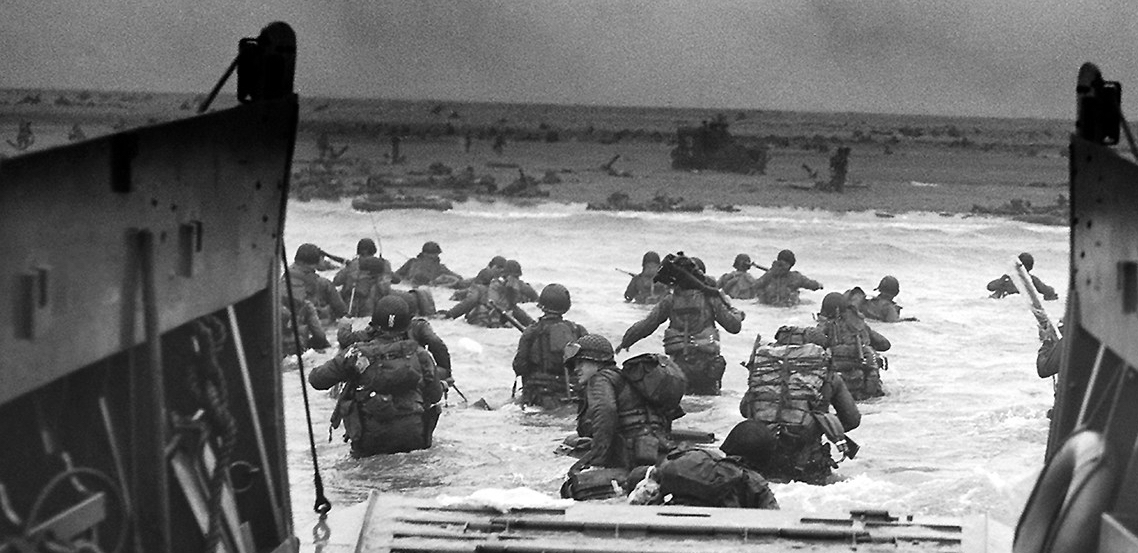

During World War II, the PB4Y-1 was the was the largest aircraft in the Marine Corps inventory. The Navy version of the B-24 heavy bomber, Liberators served with the Corps as long-range reconnaissance planes. In fact, many people today have no idea that Marines flew Liberators in World War II. These aviators experienced a very different war from the airmen who flew B-24s in Europe.

The Marine Corps formed four photo (reconnaissance) squadrons between 1942-44. Each squadron had a unique organization, but they usually contained six recon fighters, and eight Liberators. 1 The four-engine heavy bombers carried enough gasoline for very long-range missions. Armed with up to ten .50 caliber machine guns, Liberator crews could defend themselves with effect against Japanese fighters. And with a service ceiling of 28,000 feet, they had plenty of power to climb away from enemy antiaircraft fire. Leatherneck Magazine described how the recon squadrons worked:
In Pacific operations, “heavies” like the PB4Y-1s do strategic mapping and reconnaissance, while fighter types are used for most of the daily tactical field coverage. With the new continuous strip cameras, speedy fighters can zoom over enemy strongpoints, shooting pictures from altitudes of 300 feet or less and getting away before enemy defenses are alerted. … Aerial photography is largely an enlisted man’s show, although officer pilots get most of the glory. 2

The PB4Y-1 had long legs, with a 2,100 mile range, and carried a crew of ten Marines. Reconnaissance missions were typically timed so the aircraft arrived over the target area at mid-day, when the available light was best. But also, Liberators carried flares for nighttime work as needed.
Marine Liberators flew many combat missions over the Pacific, arguably the most critical of which occurred on February 4th, 1944. Two of VMD-254’s Liberators went out that day for a photo recon mission to the Japanese bastion at Truk in the central Pacific. From their airfield on Stirling Island, the round trip was 2,000 miles, leaving little room to spare in the fuel tanks.
On February 4th, the Marines arrived over the target about mid-morning at 20,000 feet. Arrayed below the them, much of the Japanese Combined Fleet rode at anchor in the Truk lagoon. Harried by Flak and Japanese fighters, the Marines loitered over the target for twenty to thirty minutes, capturing excellent images of the Japanese fleet, as seen in the below photo.

After completing their assignment, the Marines turned for home, their round-trip flight taking twelve hours. When they landed at the Piva airfield on Bougainville with their photos, they were doubtless tired, but proud of their accomplishment. Below are the extracts from the VMD-254 war diary that documented the mission. To view larger images of the pages, right-click on the image:


Although a large portion of the Japanese combatant fleet sortied out of anchorage as a result of the mission, numerous ships remained. Thirteen days later, the Pacific Fleet struck in Operation Hailstone. U. S. fliers and surface combatants sent 200,000 tons of enemy ships to the bottom of the lagoon, and destroyed 325 enemy aircraft. This single operation smashed what had been a critical part of Japan’s warfighting strategy. Naval historian Samuel Eliott Morrison wrote of the operation:
This … raid on Truk was one of the most successful of the war. For the first time a major enemy base was beaten down without the aid of land-based air power or an amphibious invasion. Truk was still usable for planes, but it had become as vulnerable to the Japanese as Pearl Harbor had been to the Pacific Fleet on 7 December 1941. Never again would the eight-rayed flag of the C. in C. Combined Fleet meet the rising sun in Truk Lagoon. 3

Today, the atoll is better known as Chuuk, a world-renowned scuba diving destination. Probably only a handful of visitors to the underwater graveyard even know that a few Marines in a Liberator started the chain of events that ended with sixty-some Japanese ships rusting away on the sea floor.
The Marines who flew Liberators were hardly known during the war. Most of their missions were classified, and they flew in one- or two-ship flights under very tough conditions. Although small in number, they played an important role in the Pacific War. Those flying Devil Dogs served with honor and distinction, playing an important role in winning the war in the Pacific.
Never forget, Mark
Notes:
- U. S. Marine Corps World War II Order of Battle, page 406, by Gordon L. Rottman, Greenwood Press, 2002.
- Leatherneck Magazine, “Skyspies,” pages 34-37, by Sgt Bill Miller, July 1944, Marine Corps Association.
- The Two-Ocean War – A Short History of the United States Navy in the Second World War, page 314, by Samuel Eliot Morrison, Naval Institute Press, 1963.
